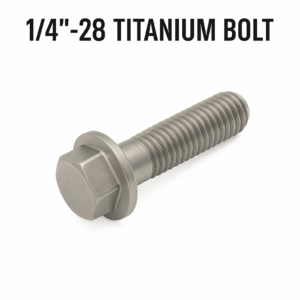Introduction
In recent years, Computer Numerical Control (CNC) technology has revolutionized the manufacturing processes of jewelry and accessories. The precision, repeatability, and design flexibility offered by CNC machining have made it an indispensable tool for both large-scale production and bespoke craftsmanship. This case study explores how CNC methods can be applied to produce a high-end brand nameplate for Red Sacre, a conceptual luxury jewelry label known for its minimalist yet powerful design language. The study outlines the workflow, from digital modeling to toolpath generation and final finishing, illustrating how CNC machining bridges creativity and precision engineering in the world of jewelry accessories.
1. Concept and Design Preparation
The Red Sacre brand embodies elegance through simplicity—its logo consists of finely balanced typography with subtle curvature and sharp edges. Translating this visual identity into a tangible metal nameplate requires careful attention to proportions, depth, and material selection.
The design process begins in CAD (Computer-Aided Design) software such as Rhinoceros, SolidWorks, or Fusion 360. The designer imports the brand’s vector logo (usually in .AI or .SVG format) and converts it into a 3D model suitable for CNC machining. This involves assigning extrusion depths, creating fillets on edges, and defining mounting features (e.g., holes or adhesive grooves).
For a jewelry-scale accessory—say, a 50 mm × 15 mm × 3 mm nameplate—the tolerance levels must be extremely fine, often within ±0.02 mm. The 3D model is finalized with smooth surfaces, as even minor geometric imperfections can lead to visible machining marks on reflective metals like brass or stainless steel.
2. Material Selection
Material choice is one of the defining factors in jewelry CNC work. The Red Sacre plate is designed to be machined from brass (C360), which combines excellent machinability, a warm golden color, and suitability for subsequent surface treatments such as gold plating or polishing.
Alternative materials include:
-
Stainless Steel 316L: corrosion-resistant, ideal for outdoor or long-term wear.
-
Aluminum 6061: lightweight, suitable for anodized finishes.
-
Titanium Grade 2: highly durable, preferred for premium jewelry.
-
Acrylic or wood laminates: for lower-cost prototypes or mixed-material aesthetics.
The selected brass sheet is typically supplied in 3 mm thickness with a pre-polished or brushed finish. Before machining, the stock is secured on the CNC bed using a vacuum fixture or double-sided industrial adhesive to prevent movement during cutting.
3. Tool Selection and Setup
CNC jewelry machining requires miniature cutting tools capable of handling fine details without compromising surface integrity. For the Red Sacre nameplate, the following toolset is recommended:
| Tool Type | Diameter | Purpose |
|---|---|---|
| Flat end mill | 2 mm | Roughing pocket and outline |
| Ball end mill | 1 mm | Finishing curved edges |
| Engraving bit (V-shape, 30°) | 0.3 mm tip | Logo detailing and text engraving |
| Chamfer mill | 1 mm | Edge beveling and polishing preparation |
Tool runout must be minimized, ideally below 0.005 mm, to maintain accuracy. The spindle speed is set between 15,000–24,000 RPM, depending on the cutter diameter and material hardness. Feed rates are carefully balanced—too high may cause tool chatter or burring, while too low can overheat the tool and material.
4. CAM Programming and G-Code Generation
Once the CAD model is finalized, the workflow transitions to CAM (Computer-Aided Manufacturing) software, such as Fusion 360 CAM, Mastercam, or ArtCAM. Here, the designer defines toolpaths—sequences of movements that guide the CNC spindle.
Key operations include:
-
Facing: A light surface cut to ensure a perfectly flat top surface.
-
Roughing: Removes the bulk of excess material with a larger end mill, leaving a small stock allowance (typically 0.05 mm) for finishing.
-
Finishing: A fine pass with a ball end mill or engraving bit to define text and contours with high precision.
-
Profiling: Cuts the outer shape of the nameplate.
-
Chamfering: Applies a slight bevel to edges for aesthetic appeal and smoother handling.
The CAM software then generates G-code, which contains precise instructions for machine movement. A typical example of an engraving command might look like this:
Each line corresponds to motion commands (G1 = linear cut, G0 = rapid move), coordinate positions, feed rates, and tool depth. The G-code is reviewed for errors in simulation mode to ensure no collisions or tool overcuts occur.
5. Machining Process
The machining of the Red Sacre nameplate typically occurs on a 3-axis CNC milling machine. The workpiece is cleaned and mounted on the machine bed with absolute coordinate referencing (G54 origin).
-
Roughing Stage: The CNC first performs roughing passes to remove the main bulk of material. A 2 mm flat end mill cuts shallow layers at 0.2 mm per pass to reduce tool stress.
-
Detailing and Engraving: Using a 0.3 mm engraving bit, the logo text and fine lines are carved at a depth of 0.1–0.15 mm, maintaining sharp definition.
-
Contour Cutting: The final outline is cut, separating the nameplate from the material sheet. Tabs may be used to hold the part in place until the final pass to prevent vibration.
-
Deburring and Inspection: Once machining is complete, edges are gently filed, and the piece is cleaned with ultrasonic washing to remove coolant residues.
The result is a precisely machined brass plate that faithfully reproduces the Red Sacre logo down to the micron level.
6. Surface Finishing
Raw CNC-milled jewelry parts often exhibit visible tool marks and require post-processing for aesthetic refinement. Finishing steps for the Red Sacre nameplate include:
-
Mechanical Polishing: Using a buffing wheel and polishing compound to achieve a mirror-like surface.
-
Sandblasting: Optional for creating a matte background contrast against polished logo text.
-
Electroplating: Applying a thin gold or rhodium coating to improve visual appeal and corrosion resistance.
-
Protective Coating: Clear lacquer or nano-ceramic coatings for long-lasting shine.
These finishing techniques elevate the machined component into a premium jewelry accessory that aligns with the Red Sacre brand’s luxury positioning.
7. Quality Control and Testing
CNC machining allows for repeatable quality, but verification is essential to ensure consistency. Key quality checks include:
-
Dimensional Measurement: Using calipers or coordinate measuring machines (CMM) to verify tolerances.
-
Surface Roughness Testing: Ensuring Ra < 0.2 µm for polished areas.
-
Visual Inspection: Detecting any burrs, tool marks, or plating irregularities under magnification.
-
Adhesion Test (for plating): Ensuring the finish adheres properly under mechanical stress.
Consistent quality control ensures every Red Sacre plate meets brand standards and can be seamlessly integrated into jewelry products such as necklaces, bracelets, or packaging embellishments.
8. Advantages of CNC in Jewelry and Accessory Production
The Red Sacre case exemplifies how CNC machining benefits the jewelry industry:
-
Precision: CNC technology achieves sub-millimeter accuracy unattainable through manual engraving.
-
Repeatability: Identical results can be reproduced across hundreds of units.
-
Customization: Designers can quickly modify digital models for new collections or personalized engravings.
-
Material Versatility: CNC machines can handle metals, plastics, and even gemstones with the right tooling.
-
Reduced Waste: Optimized toolpaths and nesting strategies minimize material loss.
These advantages make CNC not only a production solution but also a creative tool that expands what’s possible in modern jewelry design.
Conclusion
The integration of CNC machining into jewelry and accessory manufacturing has transformed the Red Sacre nameplate project from a design concept into a tangible work of art with industrial precision. Through a seamless workflow—from CAD design to CAM programming, G-code generation, and finishing—CNC technology ensures the brand’s visual identity is realized with unmatched accuracy and aesthetic refinement.
As consumer demand grows for customized, high-quality fashion accessories, CNC machining stands as a bridge between artistry and automation. The Red Sacre case demonstrates that precision engineering and creative expression are no longer separate disciplines—they coexist harmoniously in the evolving landscape of modern jewelry craftsmanship.




